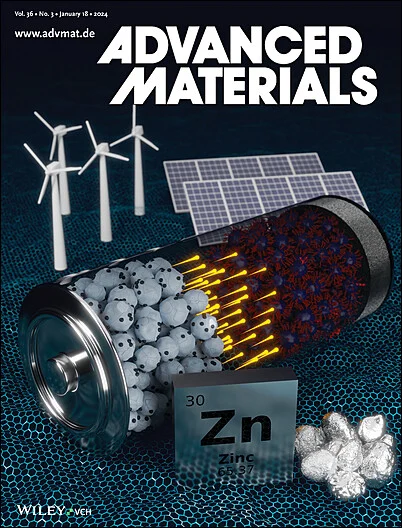Recent Advances in Scalable, High-Mass Loaded Electrodes for Grid-Scale Energy Storage
IF 26.8
1区 材料科学
Q1 CHEMISTRY, MULTIDISCIPLINARY
引用次数: 0
Abstract
The increasing electrification of daily life as well as the intermittent characteristic of renewable energy sources require viable solutions for grid-scale energy storage. Critical considerations for grid storage applications are electrode mass loading and electrode thickness as these features govern battery pack energy density, an important factor in determining manufacturing costs. For this reason, there is increased interest in finding new ways of creating electrodes with high mass loading. In this review, various high-mass loading fabrication approaches are considered for positive electrode materials used in batteries. The benchmark used for high mass loading is above 20 mg cm−2, which is higher than the practical limit of conventional tape-cast electrodes. Several different electrode approaches are described including templating, laser patterning, direct ink writing, and electrodeposition. A variety of materials are covered with the most prominent being LiFe(PO4) (LFP), LiCoO2(LCO), and MnO2. In research to date, scalable electrochemical performance has been achieved with mass loadings over 100 mg cm−2. Areal capacities as high as 14.7 mAh cm−2 at 1.82 mA cm−2 have been achieved in non-aqueous electrolytes and 9.8 mAh cm−2 at 10 mA cm−2 in aqueous electrolytes. These results establish that the mass loading of electrodes can be scaled up without compromising their electrochemical properties.

用于电网规模储能的可扩展、高质量负载电极的最新进展
日常生活的日益电气化以及可再生能源的间歇性特性需要可行的电网规模储能解决方案。电网储能应用的关键考虑因素是电极质量负载和电极厚度,因为这些特征决定了电池组的能量密度,这是决定制造成本的一个重要因素。由于这个原因,人们对寻找制造高质量负载电极的新方法越来越感兴趣。本文综述了用于电池正极材料的各种高质量负载制造方法。用于高质量负载的基准是20 mg cm−2以上,这高于传统带铸电极的实际极限。描述了几种不同的电极方法,包括模板,激光图案化,直接墨水书写和电沉积。涵盖了各种各样的材料,其中最突出的是LiFe(PO4) (LFP), LiCoO2(LCO)和MnO2。在迄今为止的研究中,在质量负载超过100 mg cm−2的情况下,已经实现了可扩展的电化学性能。在非水电解质中,在1.82 mA cm - 2时的面积容量高达14.7 mAh cm - 2,在10 mA cm - 2的水电解质中,面积容量达到9.8 mAh cm - 2。这些结果表明,电极的质量负荷可以在不影响其电化学性能的情况下按比例增加。
本文章由计算机程序翻译,如有差异,请以英文原文为准。
求助全文
约1分钟内获得全文
求助全文
来源期刊

Advanced Materials
工程技术-材料科学:综合
CiteScore
43.00
自引率
4.10%
发文量
2182
审稿时长
2 months
期刊介绍:
Advanced Materials, one of the world's most prestigious journals and the foundation of the Advanced portfolio, is the home of choice for best-in-class materials science for more than 30 years. Following this fast-growing and interdisciplinary field, we are considering and publishing the most important discoveries on any and all materials from materials scientists, chemists, physicists, engineers as well as health and life scientists and bringing you the latest results and trends in modern materials-related research every week.
 求助内容:
求助内容: 应助结果提醒方式:
应助结果提醒方式:


